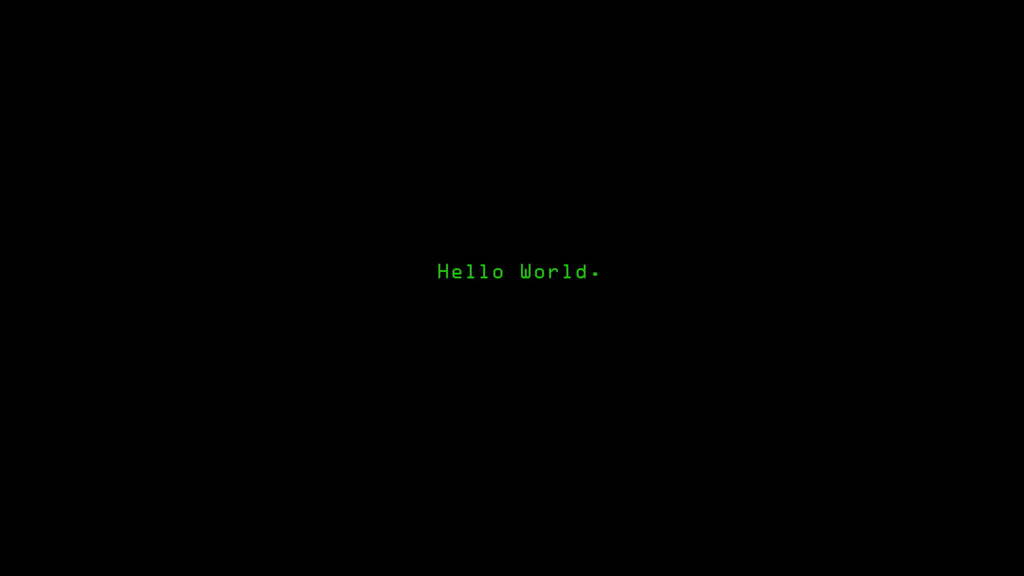Disappoint is a sober word here. I am actually pissed at the casual arrogance of Ubuntu and its parent company Canonical.
I’m actually baffled that this would come as a surprise to people. Canonical has been like this for a long time and you’d have to have blinders on to not see it. They are hell-bent on doing things their way and ignoring the wider Linux community and even their users. That is, of course, their prerogative and to some degree I even welcome their attempts at differentiating their distro from others. As a user though you should be aware of their history and the apparent direction they’re heading.
I just wish they’d stop stalling and went all-in on snaps already, since that’s pretty obviously where they’re headed.
Remember Unity? They got it popular and well liked and then killed it.
Just go Debian.
Ubuntu used to bring a bit of spit and polish at a time when most Linux distros lacked that. Nowadays it brings nothing worthwhile to the table anymore, it’s just brand recognition, but what it does bring is aggravation for experienced users.
I had this realization a few years ago when I found myself fighting against 20.04 and I asked myself: what exactly is Ubuntu doing for me that plain Debian can’t? The answer was nothing really, so I moved all my Ubuntu VMs over to Debian Bullseye and never looked back.
I don’t get the anger. Just install your software as snaps. What’s the problem?
I’ve seen a video where the guy installed steam on Ubuntu 24.04. Of course it was the snap. The guy usually tests distro to see of it’s easy to game on it. If the drivers are easy to install, etc…
He usually launches steam, then tests Valheim, Overwatch, Tomb Raider and cyberpunk.
Overwatch didn’t launch, cyberpunk neither. Valheim reported that a service didn’t launch. Tomb raider was OK.
Then he uninstalled the steam snap and installed the .deb one. Everything worked.
Enforcing packages is already something that people don’t appreciate on Linux, enforcing packages that don’t work is surprisingly hated.
Ubuntu is supposed to be a distro for beginners, how am I supposed to recommand a distro when I have no confidence the applications will work ?
mint or manjaro are better anyways
But how is a new person supposed to know that? Ubuntu is still at the top of many charts. And has years of previous positive reviews.
i feel like anyone switching os should look a bit into what they entail and then its our responsibility to tell people what is better
Mint is far better, I usually recommand it. But Ubuntu is still more popular.
I didn’t use Manjaro in many years, so I can’t judge it. The biggest problem I see with Manjaro is that it has access to AUR.
Manjaro has its own repos, and they take more time to release packages than Arch, which can be a good thing stability wise. But if you have applications from AUR installed then you might have conflicts with the dependencies needed and the dependencies used by the system.
As I said, I didn’t use Manjaro in a while, so I don’t know if it still a problem. If it is, then it’s a shame that the biggest advantage of Arch, the AUR, become that much a risk for the system.
deb has a ton of benefits that I would like to have by default and not get blocked (until i manually opt out) because a company thinks their format shall rein supreme
It’s almost like you didn’t read the article, because this specific point is addressed.
Is this snap stuff something the Ubuntu variants avoid I.e Ubuntu studio and Ubuntu budgie?
Does Linux Mint count as an “Ubuntu variant”?
Well, it’s complicated, isn’t it?
Ubuntu is built on Debian’s skeleton. RHEL is built on Fedora. Many more examples.
Linux Mint is based on Ubuntu, but in a much deeper and more connected way than Ubuntu is based on Debian. It even shares many of the same software repositories.
The next closer level is how Xubuntu, Lubuntu, and Kubuntu are just slight variations of Ubuntu. People like to call these “flavours”.
Finally, you get to the closest layer—the thousands of people who have taken a stock Ubuntu installation and swapped out one or two components to meet their requirements. We don’t even think of these as distros in their own right.
It’s a continuous spectrum, and any labels we try to apply will be pretty much guaranteed to have fuzzy edges.
No. It based on Ubuntu but without all the bullshit. .deb ist standard and flatpak is also built in. Whenever both are available, you get a choice right from the software manager. Mint is very much its own thing and great if you want to ditch Ubuntu.
@Rustmilian classic Mint is basically Ubuntu without snap. Then there’s Mint Debian edition which is built on Debian (sort of insurance if Ubuntu goes Red Hat way).
Ubuntu variants are required to use snap if they are to be considered official
For my server I simply switched to Debian and add the packages I need on top, without all that proprietary snap crap.
For desktop I’m tempted to switch to an atomic distro like Fedora Silverblue (Gnome) or Fedora Onyx (Budgie), and for the Steam Deck I’d go with Bazzite.
Give a shot for Fedora!
I could barely make out the straw man hiding between the ads. The author is working hard for them clicks!
It’s 2024, use an adblocker
Why anyone browses the web in 2024 without an adblocker is completely beyond my ability to understand. You get zero sympathy from me.
Yeah, I wonder why the author puts ads on their website in 2024 too.
Ublock origin
This along with other things is another reason why i will continue to recommend noobs start with pop os and more advanced users to use bazzite.
I do wish pop os would change their name to cosmic os though. Their current name is too close to poop os 😅
never thought of “poop os” but I think Pop!_OS is a stupid name, it’s the only reason I avoided it and chose Nobara instead lol
Don’t forget the random punctuation mixed in. It’s like the title of a kids’ tv show.
CosmOS?
That’s fantastic! Obviously no one will ever use it.
It’s astonishing.
Fedora introduced a whole new distro where you can’t install anything with dnf anymore and people love it. People love using flatpaks instead (yes I know of all the shortcomings, but you can always choose another install method for that broken package). And ubuntu users just hate ubuntu for what they do. The difference may also be that fedora gives a choice to the user and does not directly force it
There are reasons why Flatpaks are better, both technical and social.
On the technical side, Snaps add to boot up time, as all of them are mounted on boot, which can make the machine several seconds slower to boot in my experience. I don’t need Thunderbird before I’ve logged into my account, yet Thunderbird is already mounted and partially decompressed the moment I see a login prompt.
On the social side, you can easily host your own Flatpak server. Don’t trust flathub? Set up your own website! Users can add your repo with one command and you’re good. Users even get a prompt on package conflicts so they can pick which repo to use. On Snap, there are no alternative stores. The backend is hardcoded to use Canonical’s infrastructure, the alternative repos need to be installed as Snaps, and Oracle charges a hefty sum to those wanting to maintain a repo.
I wouldn’t be very upset if Canonical migrated to snaps had they implemented their system in a reasonably open design. There are advantages to Snaps over APT packages, for sure, and even though I’d rather see them use Flatpaks instead, a fully integrated Snap environment seems to be working just as well.
Canonical did a lot of things right. Mir was a good idea, for instance. AppArmor is much better than the SELinux tooling that Red Hat ships. They have some excellent dev tools for things like k8s (running on Snap, ironically). Plus, they have one of the best server distros out there.
Mir is not a good example of distro engineering, because it’s an extreme case of NIH syndrome. Unlike what it is today, the original Mir was an alternative to Wayland.
The story started when Canonical decided that X isn’t good enough and they needed an alternative. They chose Wayland first, exciting the entire Linux desktop community. But then they dropped Wayland in favor of the new in-house Mir project, citing several drawbacks to Wayland. The Wayland community responded with several articles explaining why Canonicals concerns were unwarranted. But in typical Canonical style, they simply neglected all the replies and stuck with Mir.
This irked the entire Linux community who promised to promote Wayland and not support Mir at all. This continued for a while until Canonical realized their mistake late, like always. Then they repurposed Mir as a Wayland compositor.
Now this is a repeating story. You see this with Flatpak vs Snap, Incus vs LXD, etc. The amount of high handedness we see from Canonical is incredible.
FYI my understanding is that Incus is forked from LXD, because nobody trusts Canonical any longer. I don’t think LXD itself is them doing the thing that makes them untrustworthy.
You might be referring to something they have done since then, apologies if I misunderstood. Wouldn’t be surprised if they tried to make it a Snap or force Snaps into it.
LXD was under the Linux containers project earlier. After the Canonical takeover of LXD, the following changes were made:
- The repo privileges of the original LXD developers were revoked. Those developers are driving the development of Incus now.
- LXD’s license was changed to AGPL+CLA
The first point means that Incus is the true successor of the original LXD. The current LXD is a jealously guarded pet project of Canonical in the same manner as Snap and Mir.
As for the second point, I’m usually a proponent of AGPL. But CLA corrupts it so much that it’s more harmful than with a permissive license. The real intention of this license change is to prevent Incus from incorporating changes from LXD (since the copyleft license of LXD code is incompatible with the permissive license of Incus). Meanwhile LXD continues to incorporate changes from Incus, although the Incus developers haven’t signed any CLA. This move by Canonical is in very bad faith, IMO.
So yes - I consider LXD to be untrustworthy. But that doesn’t cover the old LXD code, its developers or its community. Those transformed fully into the Incus project the same way OpenOffice was forked into LibreOffice. And I don’t trust the LXD name anymore in the same way nobody trusted the OpenOffice name after the fork (before it was donated to the Apache foundation).
Oh, yep, that’s shady and bad behavior. Thank you.
Fedora Silverblue is in an entirely different ball game. You can’t use dnf because it’s an immutable image based system where you can’t make direct changes to the Root system without making use of the rpm-ostree & VCS mechanisms. You’re making a conscious choice by using Fedora Silverblue, and the pros out way the cons for most people making that choice.
In contrast Fedora Workstation allows you to use dnf just as normal because it’s not an immutable image based system.
Ubuntu doesn’t make use of any such system so their reliance on containerized user-space apps isn’t a technical one.It is absolutely a different situation if it is opt-in. If Ubuntu made Snaps opt-in, people might not like them but it’d be a minor critique instead of fleeing the distro.
@[email protected]
The difference with Fedora Atomic, which I think you refer to, is that it’s totally open. For example, people started using the OCI containers differently than Fedora intended, which resulted in uBlue and stuff like Bazzite.Also, no one forces you to use Flatpak. You can still use Distrobox and use Pacman/ APT/ DNF/ whatever you prefer and export your apps that way. It’s just that Flatpak “won” and doesn’t have many drawbacks, and is very convenient. I mostly like them.
And, most importantly, Fedora is the fronteer of innovation.
There were many projects and ideas that failed, but many more succedded (Wayland, image based distros, etc.), and Project Atomic is just one more “testing ground” that is well thought out imo. Therefore people are expecting to “test out” new generation Linux stuff, it’s just part of Fedora. If you don’t like that, use Debian instead.I can recommend you to give Fedora Atomic a chance, it’s an extremely nice family of distros (e.g. Bluefin/ Aurora, Bazzite, etc.)!
Edit: one more thing is that Fedora is, in contrast to Ubuntu, not controlled by a company. RedHat doesn’t have nearly as much influence as people think, it’s mainly community driven, and therefore choices aren’t (in theory) influenced by $$$
Fedora Atomic a chance, it’s an extremely nice family of distros (e.g. Bluefin/ Aurora, Bazzite, etc.)!
Can you elaborate on this? I landed on nix for my PC turned server and haven’t regretted it, but I’ve been hesitant to go all in on my main laptop (I’m wary of my laptop iGPU and GPU switching becoming a config issue, and I’m dreading having to configure my wsl dev environments again…)
Windows is getting blatantly terrible enough I know I’m just putting it off, maybe a cool new technology might help make it sound more fun
I don’t know what I should say tbh 😅
For the start, you can read my post about image based distros: https://feddit.de/post/8234416Imo, Fedora Atomic is NixOS made easy. You can go to the uBlue-builder and modify a custom image if you’re a tinkerer.
NixOS is down-to-top (local config file that defines your host), while uBlue is top-to-bottom (you modify an image, image gets built on GitHub and then shipped to you).
This allows you to fork or create an existing “distro” without having to maintain a whole distro yourself.Other than that, especially uBlue is extremely user friendly imo.
- It updates itself in the background, updates get staged and applied after you’ve shut down your PC in the evening.
- You can rebase anytime you want to another flavor, e.g. I switched to KDE 6 from Gnome after it came out.
- You have to use containers for everything (mostly Flatpak, but also Distrobox or Nix)
- It’s ultra low maintenance and even more reliable, you can boot into an old image if a new update broke anything or made something buggy
- For a casual user, not distinguishable from regular Fedora
- And much more
I love nothing else more.
Ok, when I googled it earlier I saw “containers and roll back to previous version” and I made a note to do more reading
Your write up was good, much clearer than what’s on fedora and Wikipedia. And the fact you pitched immutable OS’s in general first caught my attention… The concept is a no brainer. Decouple the os and the rest of the software, and don’t bother digging into one of a kind conflicts when updating things - just make it rebuildable and create it fresh. You never know when the wrong bit will flip
Nix’s “learn this one thing, configure it once, and you’re done” stuck in my head. And after a different distros, a couple lines installed Nvidia, Nvidia’s docker package and docker
But then I had to configure WiFi and spend half an hour learning why I couldn’t mount an external drive and how to manage it… I still have no regrets, I’ve got a USB that should start converting my friends and family’s old PCs into a self organizing AI/self hosting cluster… Hopefully it works next month lol
But not what I want in a daily driver. I want something that’ll quickly do what I tell it and gracefully handle the fact I have 6 versions of Java and no idea why I need a version from 2018 specifically. And that I’m going to add a repo to install something and instantly forget what I did if it seems like the best path forward at the time
You’ve sold that pretty well - my takeaway was that atomic fedora is very modular and low side effect and also an interchangable foundation I can swap out and roll back easily… At this point, if it can run containers and the drivers I need, it sounds like a great option.
I used to use VMs so every 6-12 months I could start clean with the latest and run setup scripts for my dependencies… It was just easier than debugging some conflict. This sounds even cleaner - I swap out the base at will, and the stuff I’ve built on it should stay intact. Plus it sounds much more testable
So my main concern is will it run on an HP omen - it has zero Linux support and a bunch of concerning driver needs, but it does have a second m2 slot… What’s the worst that can happen? Except apparently some models forget they have fans in Linux and I just know the iGPU-GPU switch will cause some problem with sleeping… But Windows is only going to get worse
Now that you’ve convinced me this might be the best course (I only see less problems than other distros would have), and I’ve talked myself into giving it a go, is there any recommended reading or key concepts I should look into? Any particular flavor(s) you’d point me to first?
Now that you’ve convinced me this might be the best course (I only see less problems than other distros would have)
Sometimes, software, especially install scripts for something, are less common for Silverblue, but executing those is very risky anyway and I never felt the need for it.
And, as I said, some things just work differently. But NixOS is one million times worse than that in that regard, so don’t worry about it. You shouldn’t have many issues.
any recommended reading or key concepts I should look into? Any particular flavor(s) you’d point me to first?
I don’t know. In my opinion, my post should cover most stuff concepts and differences.
Don’t worry about it, you’ll use Flatpak anyway most of the time, and it updates itself automatically, so the package manager (rpm-ostree) doesn’t matter much for you.
You can still use your prefered package manager (apt, dnf, etc.) in Distrobox.Other than that, just don’t worry and use your laptop for whatever you want to do.
And about flavor choice, there are a few options:
- Bazzite is mainly if you game a lot
- Bluefin and Aurora are the same, just in Gnome or KDE. It’s basically Bazzite without gaming stuff
- Secureblue, which features security hardening tweaks
- Wayblue, which is with River, Wayland, and more
- And of course all different DE-spins, e.g. Sway, Budgie, etc.
Just go to the uBlue homepage and see for yourself what appeals to you :)
And, most importantly, Fedora is the fronteer of innovation.
What I find impressive about this is that they turn this into a stable product. Early Fedora Core was more of an experimental distribution but those times are long gone (IIRC around Fedora 19).
People love using flatpaks instead (yes I know of all the shortcomings, but you can always choose another install method for that broken package).
Not on Ubuntu nor Fedora, but yes: If a “larger” package breaks on update and there is no fix available and I use that application on a pretty much daily basis, then I remove it and install the Flatpak variant.
Flatpaks are slower, do not work super well with Wayland (especially scaling, some applications have GIANT text, some have 5 pixels large text, but fortunately I was able to circumvent those issues for most applications I use via Flatpak), and you need to run another system for updates and updates are friggin slow.
There is also this monstrosity ...
It is not fault-proof and it throws an error if there no older drivers, but this prevents accumulation of outdated Nvidia driver packages (at one point I had nearly 30 different variants installed, resulting of a couple of gigabytes of unused drivers that are “updated” every time I ran
flatpak update).flatpak-update () { LATEST_NVIDIA=$(flatpak list | grep "GL.nvidia" | cut -f2 | cut -d '.' -f5) flatpak update flatpak remove --unused --delete-data flatpak list | grep org.freedesktop.Platform.GL32.nvidia- | cut -f2 | grep -v "$LATEST_NVIDIA" | xargs -o flatpak uninstall flatpak repair flatpak update }
On the other hand, the applications provided via Flatpak just work.
And messing with 32 bits multilib dependency hell for Steam or installing pretty much half of Kde just for Kdenlive simply isn’t something I want.
I think you have a typo in your last paragraph.
Flatpak should run better on Wayland compared to Snaps. Not to mention Flatpak has much better XDG Portal Integration.Should.
I think they got the nvidia driver accumulation thing straightened out. On Fedora 40, I had it automatically remove a bunch of older versions and now it only lists the 64 and 32 bit versions I expect it to.
$ flatpak list | grep nvidia nvidia-550-76 org.freedesktop.Platform.GL.nvidia-550-76 1.4 system nvidia-550-76 org.freedesktop.Platform.GL32.nvidia-550-76 1.4 systemEdit: looks like it’s fixed by this.
Well there is immutable, which you probably refer to with Fedoras new distro, and then there is Canonical pushing their shitty snap format, and kinda non-sideloading. Can’t wait for the day when apt only ever allows to install snap packages.
Baah. KBIN just ate my reply.
Point form since I forgot to save to clipboard first.
Tried mint - booted to black screen
Tried ubuntu - got silly crashes like in the post trying to install stuff. It also wanted me to sign up for some sort of support package with 5 free devices to get updates or something. Also, trackpad scrolling was uncontrollable. Would scroll up half a screen or more as I lifted my fingers off.
Tried fedora - only 100% and 200% zoom option, and no right click.Managed to fix the fedora issues with some command line found on Google and a gnome customising addon.
n00b here, just playing. Can’t migrate fully as I need VBA and Playit Live etc.
Time to switch to mbin! The features you might miss are new comment highlighting and the all content view, but these are being worked out and mbin still has, otherwise, way more features.
I do wonder what kind of gardware you have… And if it’s maybe defective?
Someone being enraged about snap on behalf of Windows users was certainly a take I didn’t know I needed.
“I understand that Canonical has every right to make the decision about their product.”
That seems fair. There are loads of distros available so why not try something else if you don’t like Ubuntu?
Linux and other mainstream Unices such as FreeBSD or OpenBSD int al (that’s not something I ever thought I’d be able to say a few decades back) are not Windows or Apples or whatevs. You do you and not them!
If Ubuntu fails to scratch your itch then move on. Debian is the upstream for Ubuntu so you’ll probably be fine with that instead. There is loads of documentation for Debian via the wiki etc and of course most Ubuntu docs will apply as well.
You only got part of the quote, and not the part that really is what the article is about.
I understand that Canonical has every right to make the decision about their product. You want to promote Snap over Deb, fine. But don’t do it in a deceiving manner.
And there is a pretty reasonable middle ground:
If you would like to keep your ‘Snap store’ deb-free, fine! At least have the decency to provide Gdebi by default for local deb file installation.
Does this mean you have to use apt-get to get the deb version again? Or is there an even more complicated command? I’m wondering what happens for the other Ubuntu flavors. I’m usually running Kubuntu.
It is about installing .deb that you manually downloaded from somewhere. You can’t install them by double clicking on them, you have to install from command line.
You absolutely could in the past.
Canonical even patched apt a bit so it prefers to install snaps first.
That really pissed me off in 2018
Even apt is deliberately broken:
“[If] You use ‘sudo apt install chromium’, you get a Snap package of Chromium instead of Debian”
Same with firefox
Why does this break apt? Just because, I assume (I am using Debian btw), it installs a placeholder deb-package which, while running the postinst script, installs chromium via snap commands?
It doesn’t break apt, apt just prefers snaps now.
This is as they designed it.
The issue here is that people don’t like this other thing and so the distribution which has been moving towards this other thing for like a decade now I guess is the bad guy for continuing to work towards that goal.
It doesn’t break apt, Canonical just broke their version of apt
justto prefer snaps now.FTFY
This was where I rage quit. Who in the hell thought it was a good idea?
Canonical
It is a good idea. Imagine you are completely new to Ubuntu and want to install chromium. You’re gonna search on Google how to do that and you will probably find an old article telling you to use APT. If ‘sudo apt install chromium’ did not work it would be very frustrating.
Only reason it wouldn’t work is Canonical killing the .deb package. That was an unforced error. So no, still not a good idea.
Same here, it’s the reason why I kicked Ubuntu off my laptop. They removed any way to choose and made it such a pain to get around the Snap bullshit. I’m on Linux because I want to choose what I do with my system.
Who in the hell thought it was a good idea?
Marc Shuttleworth
I have serious doubts about that due to the role of early Ubuntu in popularizing desktop Linux. For many including me, Ubuntu was the first taste of GNU/Linux and it was a breath of fresh air compared to the contemporary clumsy and cumbersome distros like Fedora. Only Ubuntu from those days has any resemblance to the experience we expect from desktop Linux today.
The problems at Canonical seems like a systemic institutional issue, probably related to egotistic management with temper issues. That of course means that Shuttleworth is the source of those personality disorders. But still…
I have serious doubts about that due to the role of early Ubuntu in popularizing desktop Linux.
Ubuntu didn’t move overall Linux market share at all. It just took the “gateway drug” role from Mandrake/Mandriva.
🤮
Seriously? Wow. That moves the whole thing into asshole territory. I’m glad I went with a distro that prioritizes not being shitty.
The sheer audacity and arrogance of giving me something for free and not caring* about me.
* “Not caring” presumably means “not doing something about my pet issue”, but I’m not going to take the clickbait.
It’s about not being able to install .deb packages through the installation GUI.
The whole snap issue is hardly a pet peeve. Let alone in an LTS release.
Ubuntu user here. You can/could install .deb packages with the UI?
TIL
as far as I remember I could always double click the .deb and the GUI would let me install it, pretty handy. Aaand it stopped working some time ago. I’m not using ubuntu outside of work and there’s not much system package installing in work environments so I’m out of touch now, but it was handy at the time.
The discord snap is basically unusable for me so that’s the only way I can have discord installed. I’ll probably switch away from kubuntu next time if it inherited this problem.
There’s the flatpak too, that’s the version I use alongside webcord in arch.
Does that have auto updates? It’s kind of annoying to download debs every week.
I’m not super well versed, I’m a Linux casual.
you can go into the command line and write “flatpak upgrade”, but every time I open the discord app it apparently downloads something, idk if it’s self updating correctly or not.
You can everywhere else
The software is broken in an obvious way, even though it used to work and they could just roll it back for the release.
They are actively trying to harm the community to somehow “force” users into snaps.
giving me something for free
What are you talking about? It is not even “for free”, they get a lot value from the community.
They’re nothing without the users, it’s not that they would be making it if nobody uses it anyways. Users used to love them, they trusted them, they went on spreading their system, reported issues, created tutorials, flavors, videos, tools, and so on, they helped Cannonical become what it is now.
I don’t think they’re giving us anything “for free.”
They’re getting “exposure”?
That’s precisely I changed to MX Linux. I won’t use ubuntu for a long time I guess.






























